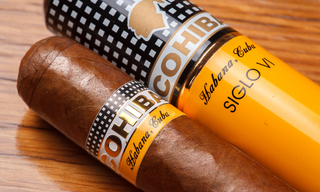Last week, the Hong Kong Monetary Authority intervened to prop up the local currency for the first time since 2019, putting the spotlight squarely on the longstanding peg with the tightening U.S. dollar. What say the banks?
Last week, the Hong Kong Monetary Authority (HKMA) spent around $1.5 billion to defend the local currency’s peg with the U.S. dollar amid rapid tightening of the Federal Reserve’s monetary policy.
The HKMA made four interventions in three days to buy Hong Kong dollars, marking the first time it has stepped into markets to purchase the local currency since 2019.
Despite a war chest that boasts one of the largest financial reserves in the world, there is a growing demand for carry trades to sell the Hong Kong dollar and local authorities are prioritizing growth over inflation control. What say the banks?
Carry Trade, Growth Focus
A major driver for Hong Kong dollar weakening has been the trending carry trade – borrowing in Hong Kong dollar to buy higher yielding U.S. dollar assets – which gained momentum since February this year as the Hong Kong Interbank Offered Rate (HIBOR) remained largely below the London Interbank Offered Rate (LIBOR) during the month.
In addition, Hong Kong rates are lagging due to a weaker growth outlook fuelled by zero-Covid restrictions and capital outflows.
«Quantitative tightening and the fastest pace of interest rate hikes in the U.S. since the pandemic have contributed to the rising spread differential between the two currencies, putting pressure on the HKD,» according to a Julius Baer research note authored by head of fixed income research Asia Magdelene Teo and equity research analyst Asia Richard Tang.
«FX carry and the HKMA prioritizing growth over inflation should keep the HKD on the weaker side.»
More Interventions
As a result, more pressure is expected to be felt in the near term for the Hong Kong currency.
«We are only at the beginning of this cycle,” said William Deng, North Asia economist at UBS Global Research. «We believe the HKMA will likely conduct more interventions to purchase HKD in the coming months, as the U.S. Fed hikes further.»
According to Deng, HKMA’s policy base rate and three-month HIBOR could reach 3 and 2.5 percent, respectively, by end-2022. This compares to the projection for a 250 basis point interest rate increase by the Fed this year.
Resilience Expected
Nonetheless, banks are unanimously calling for the Hong Kong dollar’s peg – established in 1983 – to remain resilient against tightening U.S. monetary policy.
«[Rising interest rates] will certainly take some steam out of the economy, but hardly be the end of the world,» according to a note by Ryan Lam, head of research at Shanghai Commercial Bank, forecasting three-month HIBOR to reach 2 percent by end-2022.
At DBS, there was especially strong optimism for liquidity conditions to improve in the second half with anticipation of capital inflows from Chinese listings.
«Hong Kong just has to see this year through,” said Samuel Tse, a Hong Kong-based economist at DBS. «I’d expect things to stabilize by [the third quarter]. The stock market will recover, Chinese re-listings will bring in capital and money will come back in. This won’t be the end of flush liquidity in Hong Kong. Not this time.»
Property Headwinds
Still, a tighter U.S. dollar will inevitably have some negative impact and there are concerns that rising interest rates could hit Hong Kong’s infamously expensive real estate market.
«All else equal, [an accelerated rise in the HIBOR] should benefit local banks in HK as their net interest margin may expand. On the other hand, the mortgage burden will increase, so we are monitoring whether this may eventually add pressure to the physical property market,» said Julius Baer.


























